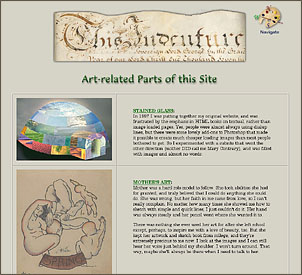personal ways as he was original in his art, but with a large, warm heart. To this
man Glaize, as a youth, went to learn lithography, because he could make his living by it while
he learned to paint. Eugene Deveria, who lived with his brother, advised and instructed the young
fellow in painting. So, in due time, he became an artist, and commenced to exhibit at the Salon. He
took medal after medal, received the Legion of Honor in 1855, was commissioned by the Government for
many decorations for public places, and prospered out of the sheer
force of his genius. His art is excellently represented by "Love's First Step."
The "Prayer to Isis" is one of the famous pictures of Luis Falero which grew out of
his study of the antiquities of Egypt. Here a girl performs upon one of those ancient harps over
a sounding skin like a drum-head, of which examples
have been found by explorers. The instrument which the young child uses are sistrums. They were
made of metal, and produced a rattling sound which kept time to the notes of music
and the chant of the worshippers.
In French pantomimes they have a character called Pierrot, who is practically equivalent to an English
stage clown. He is dressed and made-up as a young boy, and his business on the boards is to be as stupid,
simple-minded, cunning, and malicious, and above all funny, as a young boy can be in real life.
Pierrette, or Mademoiselle Pierrot, like Pierrot, makes up as a young girl, and behaves
as mischievously, though not as stupidly, as he. In the picture by Robaudi he shows
one of these femine counterparts of the clown, all silk and satin, who returns
Back Forward
Chapter 7 Text
Georges Pierre Marie Van den Bos





![]() Copyright © 2007, Mary S. Van Deusen
Copyright © 2007, Mary S. Van Deusen